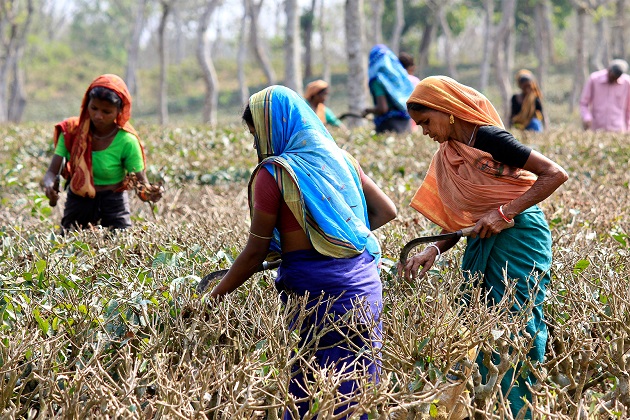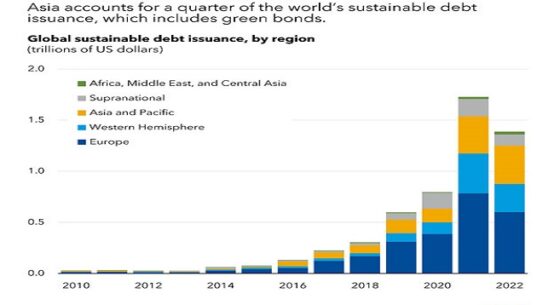
Tea has been an integral part of Bangladeshi life for long. From breakfast to evening chat, tea is a favorite drink to serve. Besides Bangladesh, tea is among the most popular drinks in countries like India, China, Japan and the United Kingdom.
During British colonial rule, the first tea production in Bangladesh started in 1840 on the slopes of the Chittagong hills. However, the first commercial tea garden was established in 1857 in Malnicherra, in the eastern city of Sylhet.
Due to the drink’s popularity, tea production as well as the number of commercial gardens increased over time. According to the Bangladesh Tea Board, the country currently has 168 commercial tea estates and tea gardens with an area of 113,112 hectares (279,506 acres), which produce more than 60,000 tons of tea annually, making the country the world’s 12th-largest tea producer.
At the same time, concern over the environmental and ecological damages of tea production has come to the forefront as tea producers have been using the harmful chemical glyphosate as an herbicide, as a quick remedy to rid tea gardens of weeds and other unwanted plants.
In order to find out the volume of glyphosate used in Bangladesh’s tea gardens, Mongabay talked to several workers.
“We use medicine [herbicide] in the tea garden to kill the grass [weeds]. After spraying, all the grass melts into the soil within 15 days,” said one tenured employee of Sylhet’s Tarapur Tea Gardens who preferred to remain anonymous for fear of losing his job.
When asked about a specific brand name, the longtime tea worker replied with Roundup, which is banned in 33 countries worldwide due to its key ingredient, glyphosate.
It’s the most popular herbicide in the world; a broad-spectrum, nonselective systemic biocide. Its extensive and intensive use can seriously threaten the ecosystems and people’s health since the herbicide can linger in the environment for days or even months.
Herbicide use reduces the suitability of the landscape for wildlife, including pollinators and pest antagonists that provide ecosystem services. According to a study on industrialized agriculture with large-scale monocultures in many countries, this leads to decreased crop diversity, in-field plant diversity, and landscape biodiversity.
Among Bangladesh’s 168 commercial tea gardens, 134 are located in the Sylhet region, which includes some major tropical rainforests such as Lawachara and Rema-Kalenga Wildlife Sanctuary, habitats of globally threatened species such as the northern pig-tailed macaque (Macaca leonine), Phayre’s leaf monkey (Trachypithecus phayrei), capped langur (Trachypithecus pileatus) and western hoolock gibbon (Hoolock hoolock).
“Usually, herbicide is being used in the rainy season. Soil can absorb as much as it can, which means it mixes with the soil. Second, almost all the tea gardens are in the valley, so when it rains, the water mixes with the water body very swiftly with this chemical, and our aqua system is also affected. And lastly, using herbicide, many useful insects, which are the main factor of pollinators, are also killed. So in a sense, the whole biodiversity system is affected in every possible way,” said Ramij Uddin, head of the Bangladesh Agriculture University Department of Agronomy.
However, he also said that inadequate knowledge of using herbicides causes the main problem in Bangladesh. “In Bangladesh, 20 years ago, farmers started using herbicide. Worldwide, herbicide use is common. But in Bangladesh, most workers don’t know the doses of herbicide, how often it should be used and spraying conditions,” he added.
What the authorities say
“In 2021, the Bangladesh government approved several herbicides to kill weeds. In those approved herbicides, the presence of glyphosate exists to many extents. Ironically, despite having concern over the ecological damages, the government still has not banned it,” said Shameem al Mamun, principal scientific officer of the Bangladesh Tea Research Institute (BTRI), adding that the government is waiting to find cost-effective alternatives.
“In this situation, we are trying to train workers who work in the garden so that they can use it properly. But we have a manpower shortage and scientists to monitor the overall situation. So, Roundup and other herbicides, whose key ingredient is glyphosate, are being used nationwide. The government has no plan to ban it until an alternative method is introduced,” he added.
According to the study, herbicides, like all pesticides, are not left on the crop fields where they are sprayed. Field margins are among the closest regions where overspray occurs. Plants and animals in nearby non-cropping areas are exposed to spray that drifts. Streams and nearby terrestrial habitats are exposed to rain runoff.
The study also says herbicides can be transported over longer distances when volatilized or bound to blown soil particles.
A nonchemical alternative for killing weeds is to trim the weeds after a certain time. However, the labor cost is high for the tea garden owner; thus, they use the easiest way possible, ignoring the potential side effects for the ecosystem.
(This article was republished from Mongabay under Creative Commons License)
Farhana Parvin is a free-lance journalist based in Dhaka, Bangladesh


